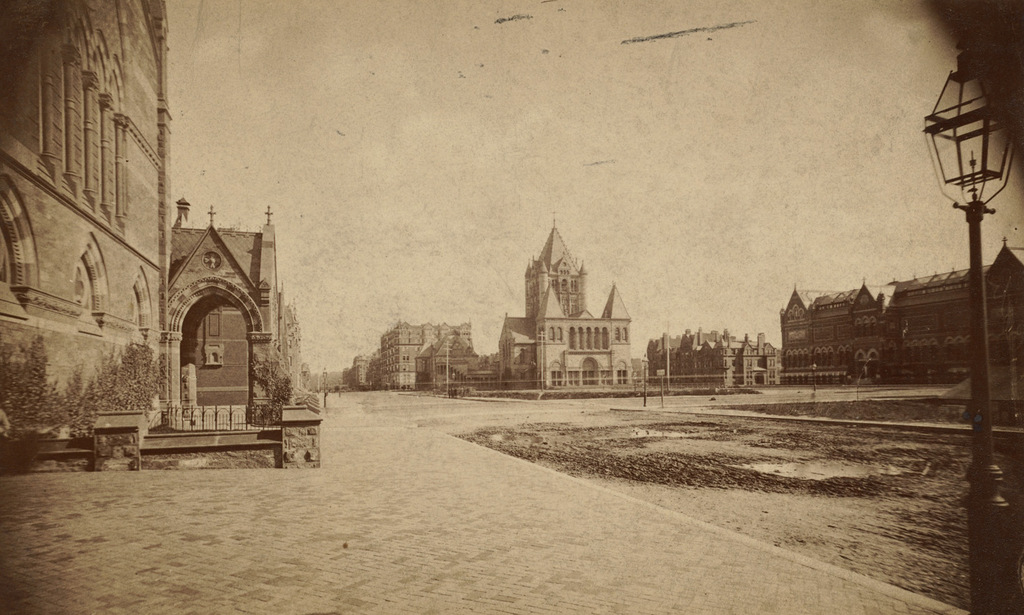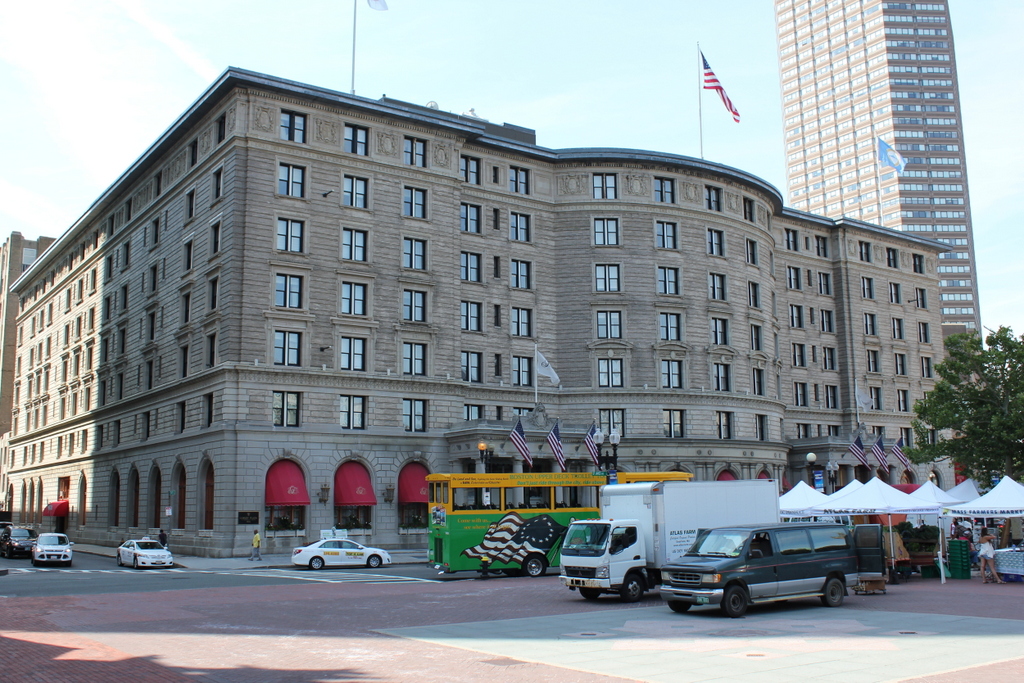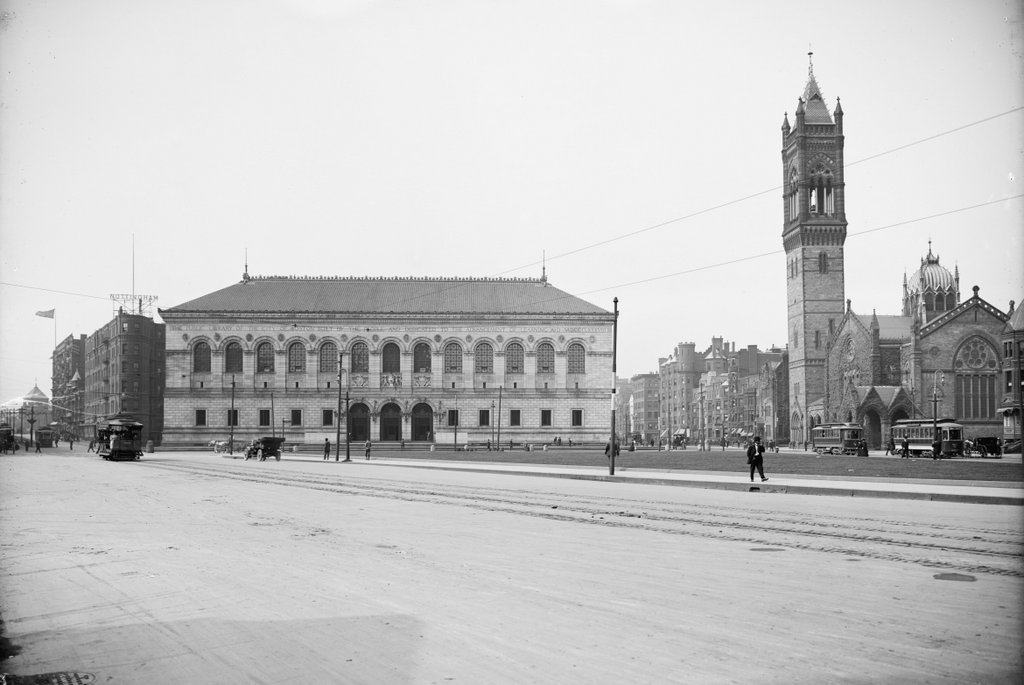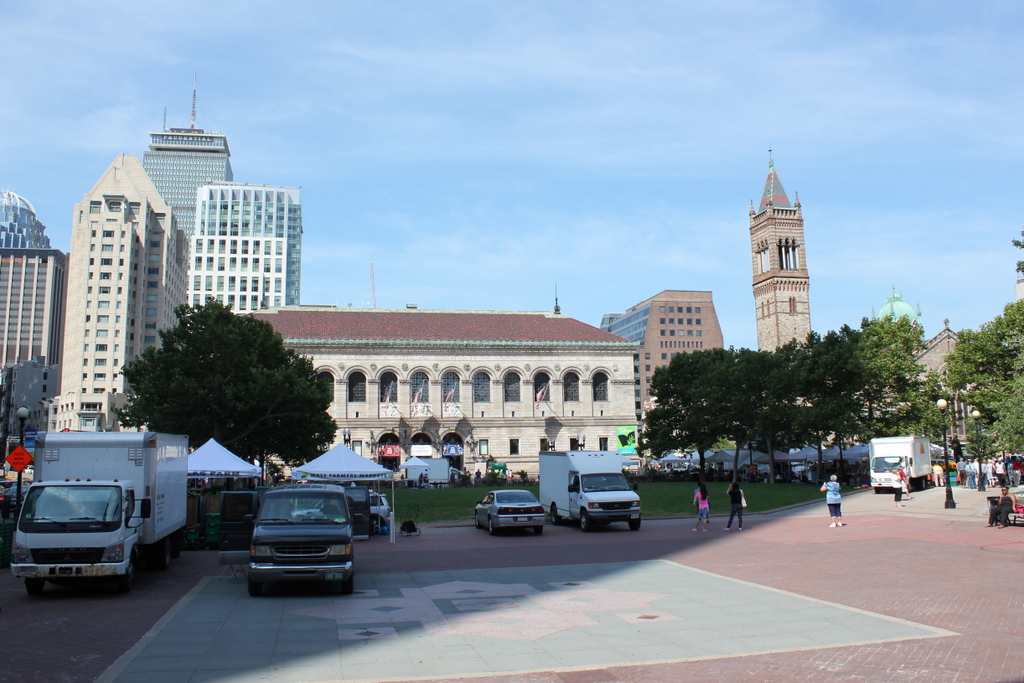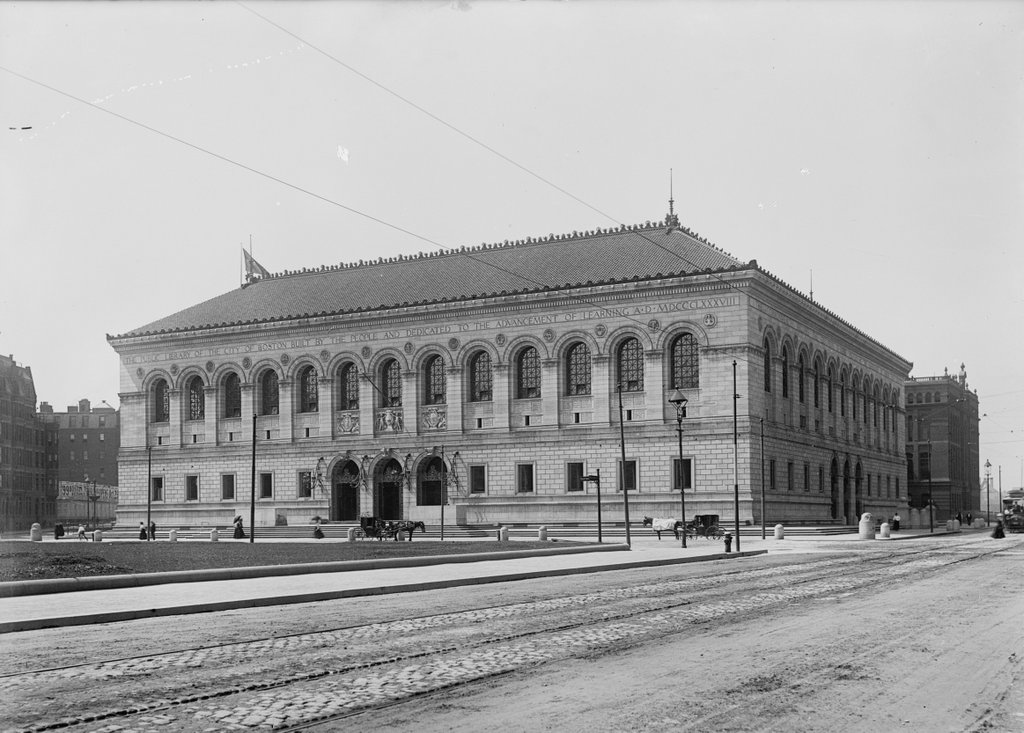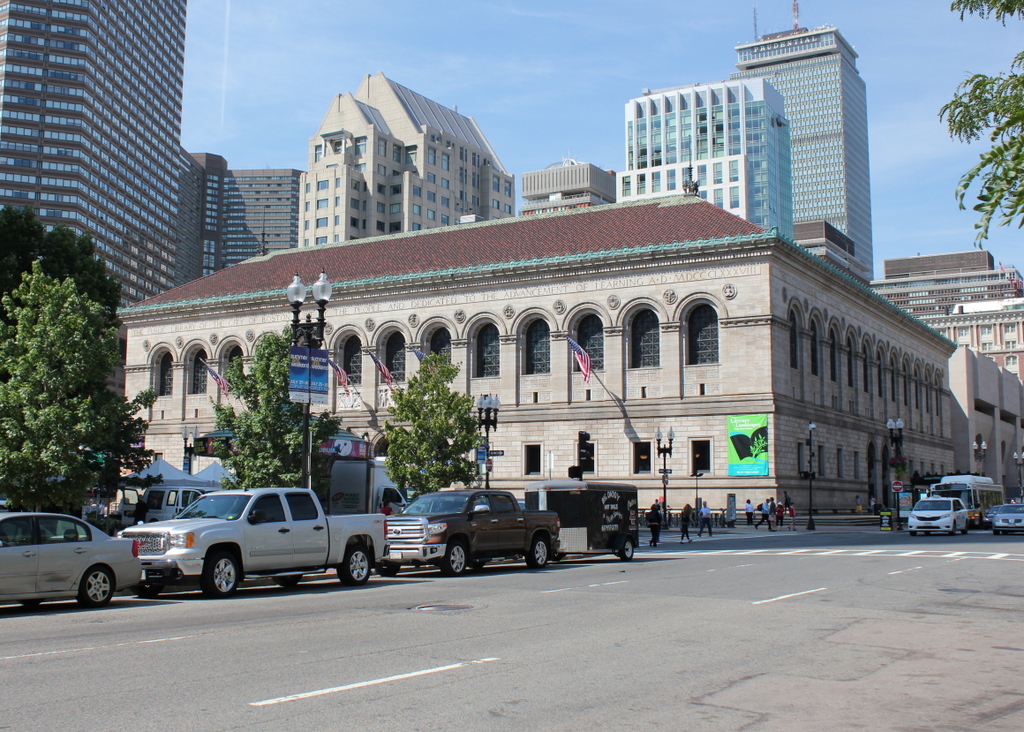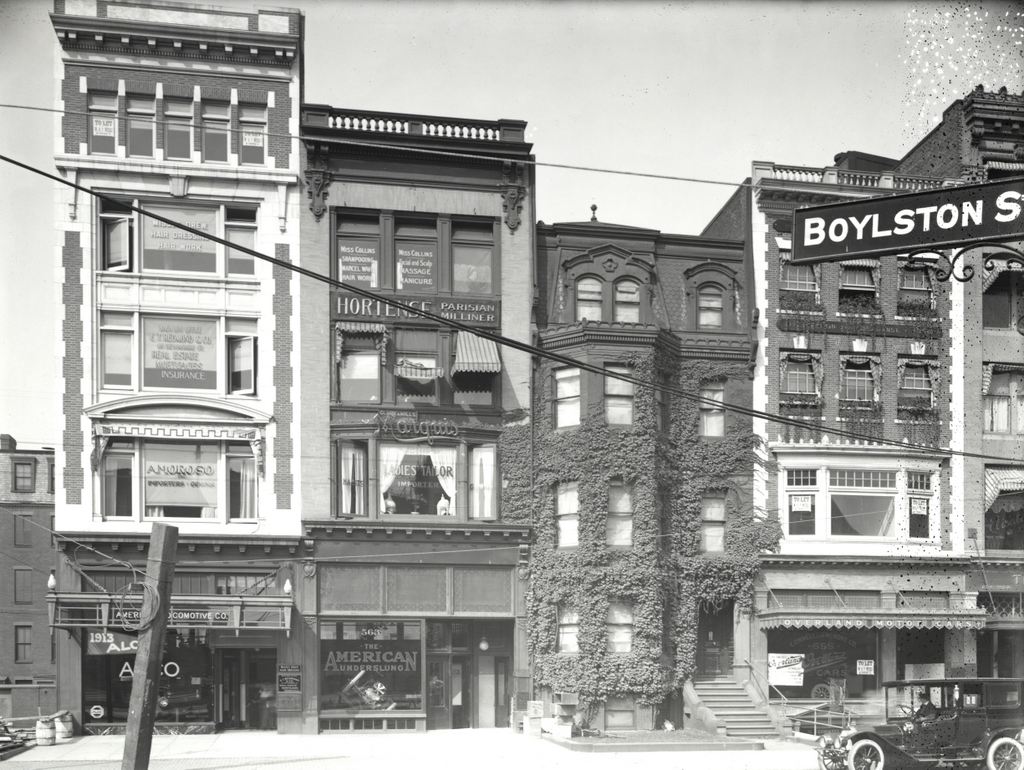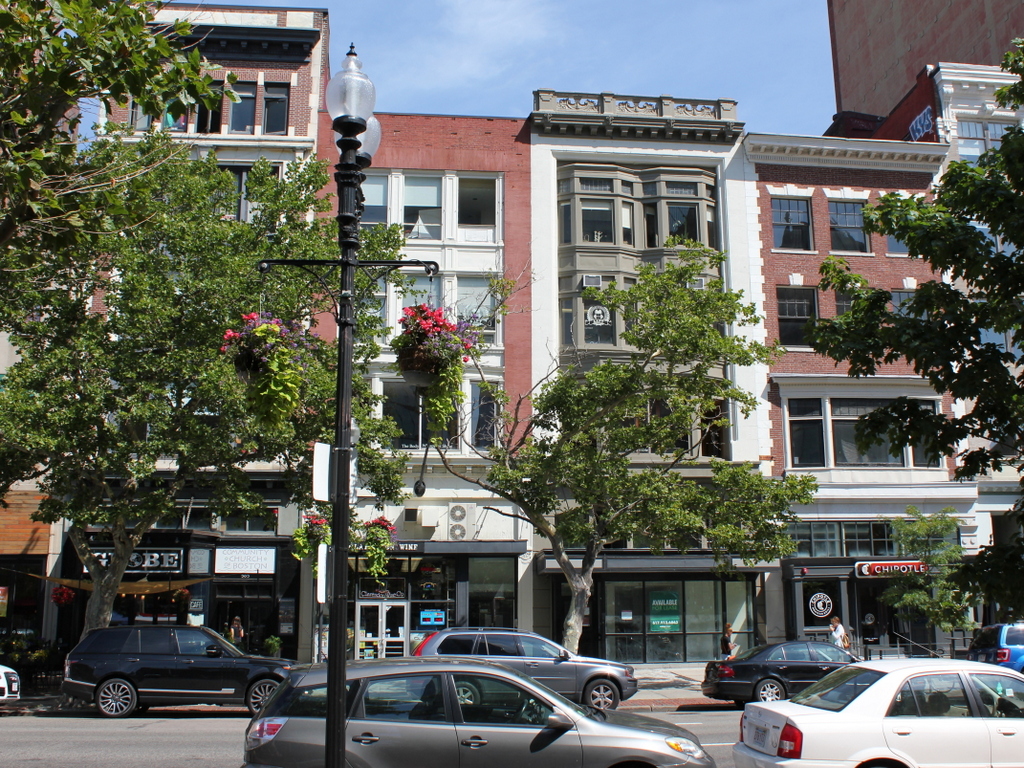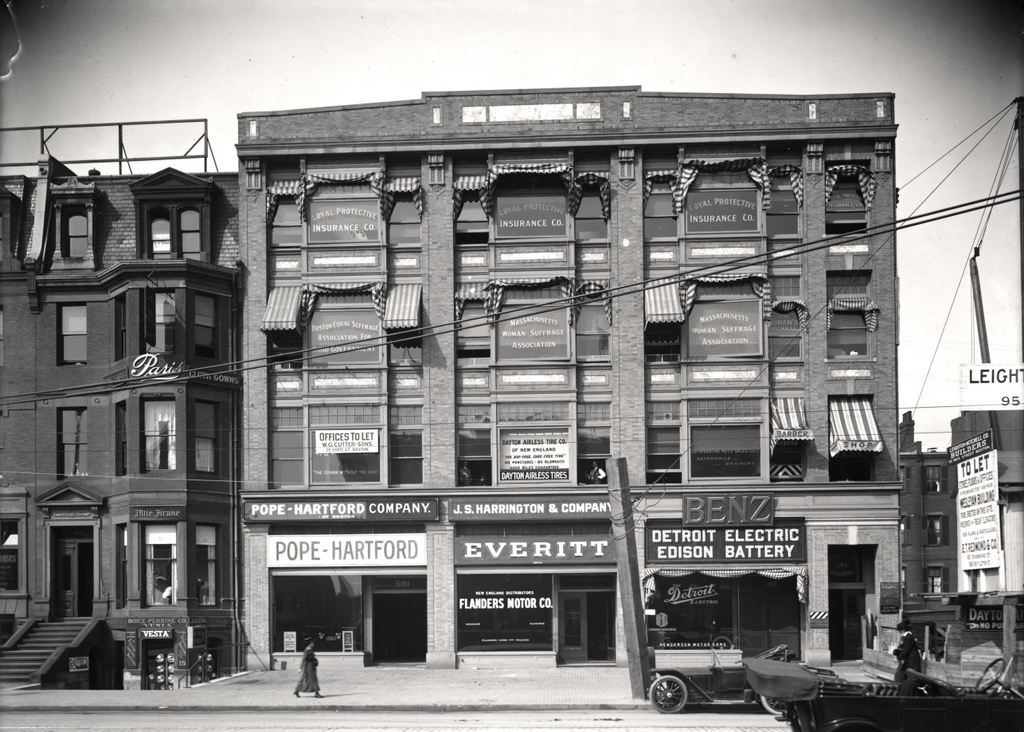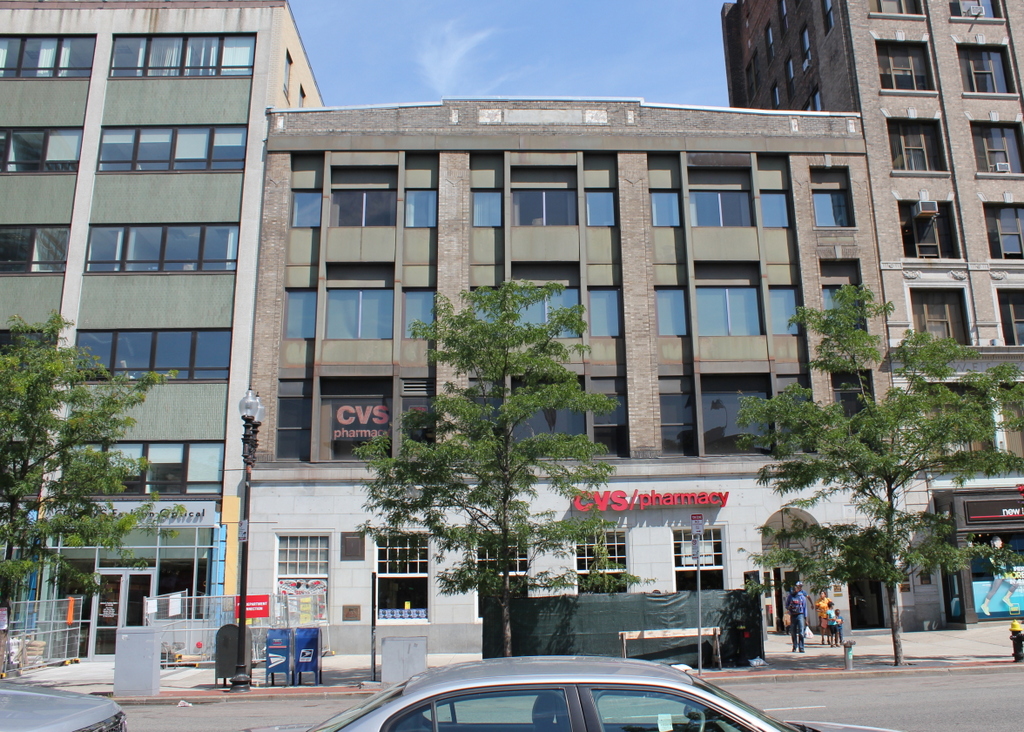Copley Square as seen from in front of the New Old South Church in Boston, in 1893. Image courtesy of the Boston Public Library.
Copley Square in 2015:

The first photo shows Copley Square as it appeared only about 20 years after this section of Boston was developed. In the second half of the 19th century, the Back Bay was transformed from a polluted marsh to one of the city’s premier neighborhoods. Many of the city’s important cultural institutions moved here, with many of them surrounding the Copley Square area, including the New Old South Church on the left, the Trinity Church in the center, and the Museum of Fine Arts on the right. Also under construction, but just out of view of the camera on the right, was the main branch of the Boston Public Library.
Today, the Copley Square area has seen some significant changes from the 19th century. It remains the focal point of the Back Bay, but what started as neighborhoods of Victorian rowhouses evolved into low-rise commercial buildings, and eventually modern skyscrapers, especially in the area south of Boylston Street. The two churches from the 1893 photo are still standing, but all of the other buildings are gone, including the Museum of Fine Arts, which moved to a larger facility further down Huntington Avenue in the early 1900s. The old building was demolished, and replaced in 1912 with the Copley Plaza Hotel, which still stands today.
The most prominent new building in the 2015 scene is the John Hancock Tower, which was completed in 1976 and is the tallest building in New England. Beyond it, near the center of the photo, is the 1947 Berkeley Building, which is also known as the Old John Hancock Building. Together, these skyscrapers, along with the ones seen facing the other direction in this post, make up Boston’s High Spine, a string of skyscrapers extending west from downtown Boston, roughly along the Boylston Street and the Massachusetts Turnpike.

